The traditional advertising landscape has changed dramatically since the emergence of smartphones and social media. Mobile advertising allows brands to experience higher conversion rates, lower costs per click, gather valuable data, and more.
Given that 81% of adults own a smartphone in the US and 285 million people are expected to have a smartphone by 2023, this type of promotion is projected to continue gaining popularity.
Below we define what mobile advertising is, discuss the different types of mobile promotion, and highlight the perks of advertising on smartphones. We also include analysis on brands leading the pack with innovative ads.
What Is Mobile Advertising?
Mobile marketing is a digital strategy targeting users on smartphones and tablets through websites, email, SMS, social media, apps, and other channels. It aims to connect with audiences on mobile devices, capitalizing on unique opportunities and challenges of the platform.
Mobile marketing is essential in the digital era, leveraging mobile devices to connect with users in real-time, offer personalized experiences, and drive engagement and conversions.
Now that US consumers spend more time on their smartphone screens than watching television, brands have been forced to make a shift to creating campaigns that fit in your pocket.*
Advantages of Mobile Advertising
With mobile advertising revenues increasing each year, more and more companies are hopping on the bandwagon and allocating marketing funds to this type of advertising. Along with growing revenues, there are many benefits to investing in this type of advertising.
Here are the top advantages of mobile advertising:
- Broader audiences: More people are accessing the internet from their phones than their computers, making it easy to reach a wide audience.*
- Lower cost per click (CPC): There is less competition on mobile than tablets and desktops, making CPC lower.*
- Easier to geotarget: Most people carry their mobile devices wherever they go, making it possible to deliver advertisements to them based on location.
- Higher conversion rates: Mobile advertisements have a 50% higher conversion compared to tablets and desktops.*
- Interactive nature of mobile: Advertisers can create interactive games, contests, or virtual reality.
By leveraging these advantages, businesses can create effective mobile advertising campaigns that enhance brand visibility, drive engagement, and contribute to overall marketing success.
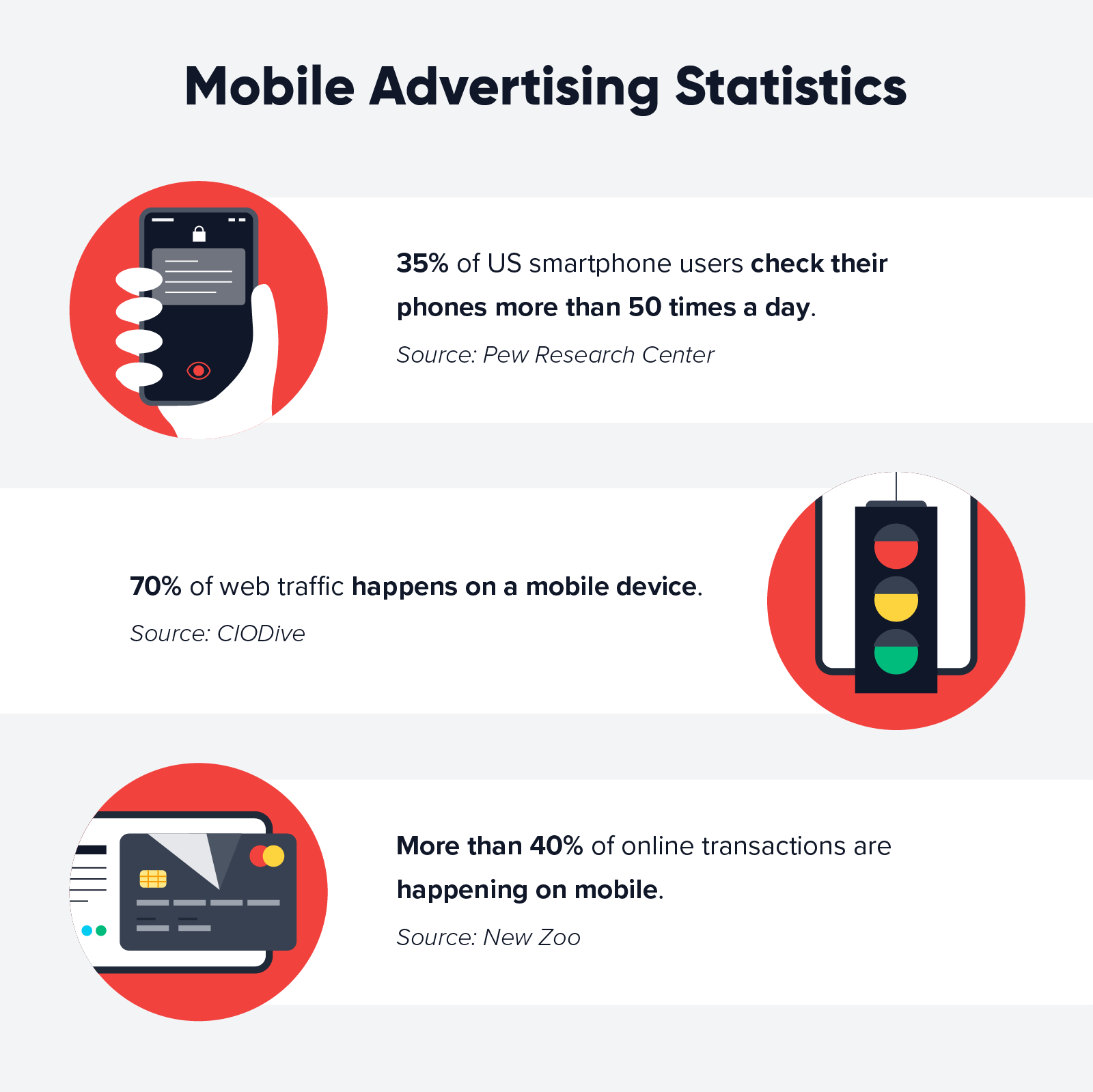
With this kind of upside to mobile advertising, smart brands are allocating a larger percentage of their marketing budgets to this new platform.
Types of Mobile Advertising
Each type of mobile advertising comes with its own platforms, designs, and techniques. When selecting the type of advertisement you want to use, it’s important to think about your end goal to determine which will work best for your campaign.
Mobile Video Advertising
Video advertising is a fast-growing industry because of its high conversion rates when promoting a product or service. You can display mobile video ads through mobile apps, websites, online stores, and social media.
Videos are a great advertising tool in general, but the ability to share a video on your smartphone allows for increased exposure of your brand with each share. Another advantage is that, unlike televisions, you can make mobile ads interactive for your viewers.
Banner Advertising
A banner advertisement is a thin horizontal graphic that stretches across a website to promote a brand or product. These banners are usually highly visual to grab a reader’s attention and create brand awareness with a single image.
These advertisements are linked to the brand’s website, so once someone clicks on the ad, they’re transported to the product or page being promoted.
Pop-ups
Pop-ups are windows that appear on your screen and overlay the host website’s page. These are great for improving conversion rates and building email lists.
Native Advertisements
Native advertisements are built to blend into the environment or app that they are displayed on. A significant advantage of native advertising is that ads can’t be exited or blocked by the user.
These are often used on social media platforms and can be perceived as regular posts that blend into a user’s feed.
Interstitial Advertisements
Interstitial advertisements are used at transition points within apps and take up the full screen of your mobile device. Some examples of transition points occur while a page is loading, in between game levels, or when opening an app.
These interactive ads are popular among brands because they’re great at boosting downloads, grabbing a user’s attention, and typically have a high click rate.*
Location Advertising
Location advertising (also known as geotargeting) is the process of sending targeted messaging to individuals that enter a specific location. Geotargeting is a great method for gathering potential customer data by seeing which stores they frequent and tapping into their interests.
Brands can send a message advertising a sale nearby, promoting a grand opening in a specific city, and even including customized messaging based on the weather, user location, or user behavior patterns.
Tips for Planning a Mobile Advertisement
During the planning phase of your mobile advertisement, it’s important to keep in mind these essential tips to make your campaign a success.
Know Your Target Audience
It’s important to choose a specific group of people — an audience segment — to target your advertisement to. Once you have identified who you want to target, you can test what type of messaging your audience will react positively to.
Use Data-Driven Information
It’s essential to gather data on your target audience to create a good advertising campaign. After you’ve gathered your information, it’s a good idea to examine the user goals, engagement rate, and behaviors to determine the best action plan.
Learn more on how-channel-marketing-strategy-can-help-you-maximise-your-campaigns
Establish the Objectives
Mobile advertisements can do several things, including boost sales, promote brand awareness, increase traffic to your site, and so much more. You need to have measurable goals for your advertising campaign to determine its success rate and decide what type of campaign you want to pursue.
Identify the Best Type of Mobile Advertisement
There are many types of mobile advertisements, and each one comes with its own set of outcomes based on your needs. It’s important to consider the audience you’re trying to reach and your objectives to decide which type of advertisement is right for your campaign.
Design Technique
Focusing on using high-resolution designs and high-quality graphics will pay off during the outreach process. Ensure your content copy and visuals align with your overall message to create a compelling experience for your consumers.
13 Brands Leading the Pack in Mobile Advertising
Although most every brand has hopped on the mobile advertising bandwagon, there are a few that stand out and are leading the pack for their innovative campaigns.
These brands used different advertising methods and platforms in new and revolutionary ways. Their creative approaches lead them to achieve their goals and win awards from top publications.
1. Snickers
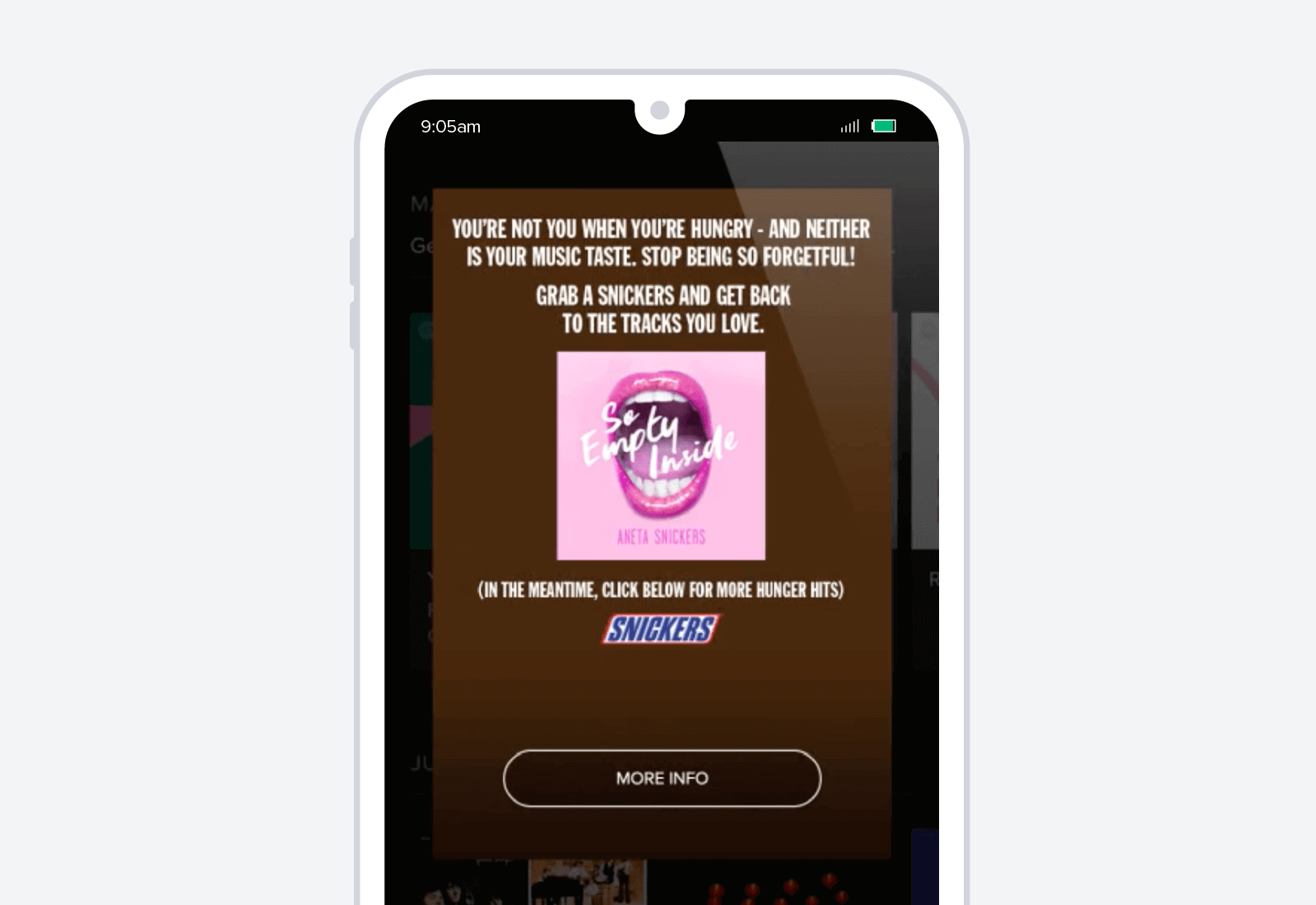
Snickers partnered with Spotify to create an advertisement that targeted users listening to genres of music outside of their usual music taste.
The “You’re Not You When You’re Hungry” audio campaign aimed to drive sales by making Snickers the obvious choice for users when they’re hungry. Snickers used Spotify’s consumer data to determine which users were listening to songs that didn’t align with their everyday interests.
Once the user streamed an out-of-the-ordinary song, Snickers would deliver their audio message with a link to their branded playlist, “The Hunger List.” Each audio advertisement was customized to match the consumer’s favorite genre of music.
The brand’s mobile campaign sparked positive feedback on social media and inspired discussion around creative advertising possibilities on streaming services.*
2. Lucky Charms
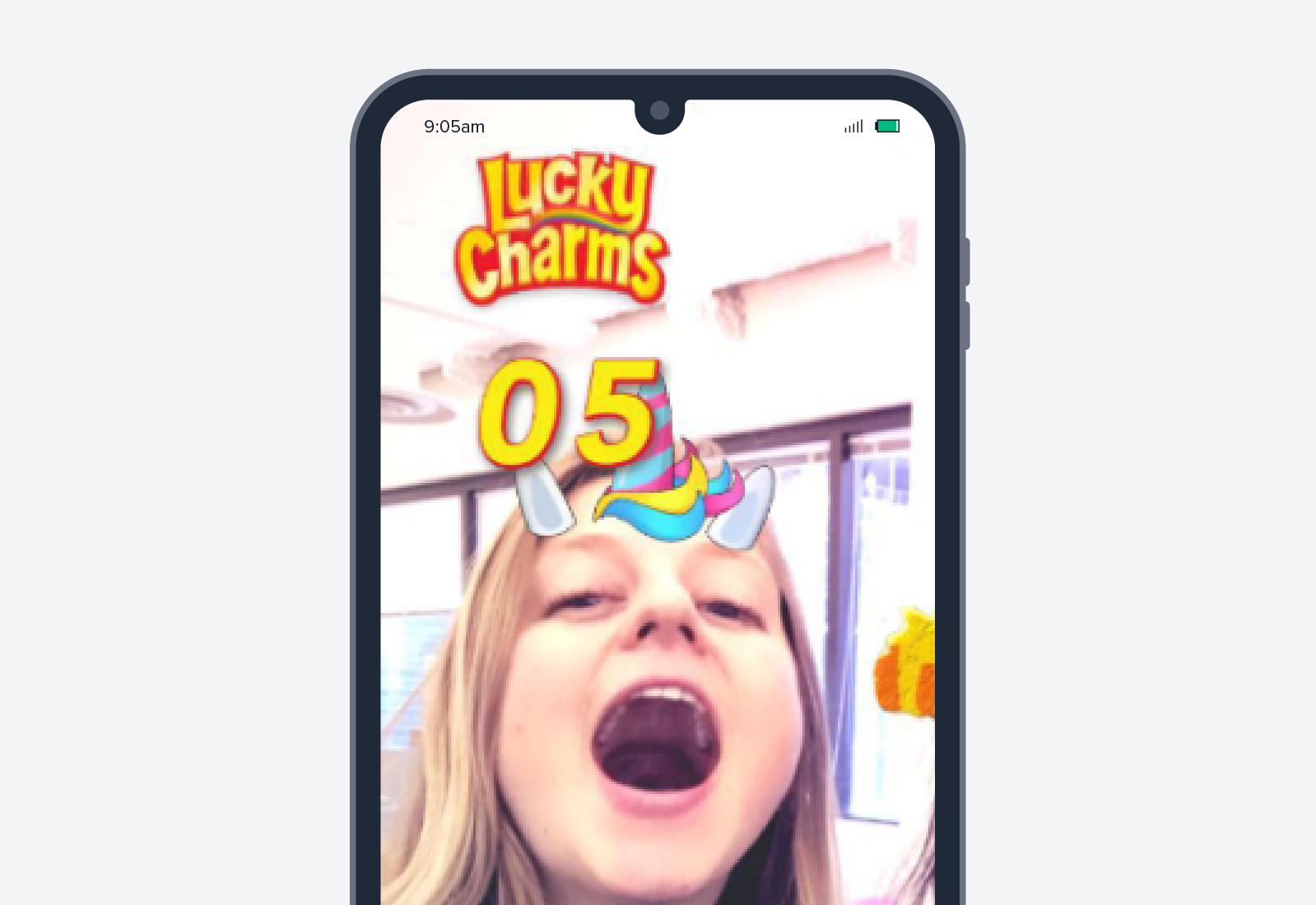
For St. Patrick’s Day, the popular cereal brand Lucky Charms teamed up with Snapchat to promote new unicorn-shaped marshmallows.
The goal of the campaign was to make kids and parents aware of the new cereal character and inspire parents to continue purchasing the breakfast cereal.
With the help of Snapchat, they created an interactive unicorn filter and game that you could play with friends across the app.
This mobile campaign resulted in 12 million users trying the filter and a 3.4% lift in sales throughout the campaign.*
3. Chapstick

Chapstick partnered with Pandora to create a mobile advertising campaign to build a more personal relationship with customers.
Chapstick ran full screen, banner, and audio advertisements on the radio streaming platform that directed users to their Facebook profile and encouraged them to “like” their page.
The brand also created a signature radio station within the Pandora app to keep the conversation about their brand going.
Their social media pages updated consumers on new product launches, allowed them to learn about their products, and created a more personal connection with their users.
4. Pond’s
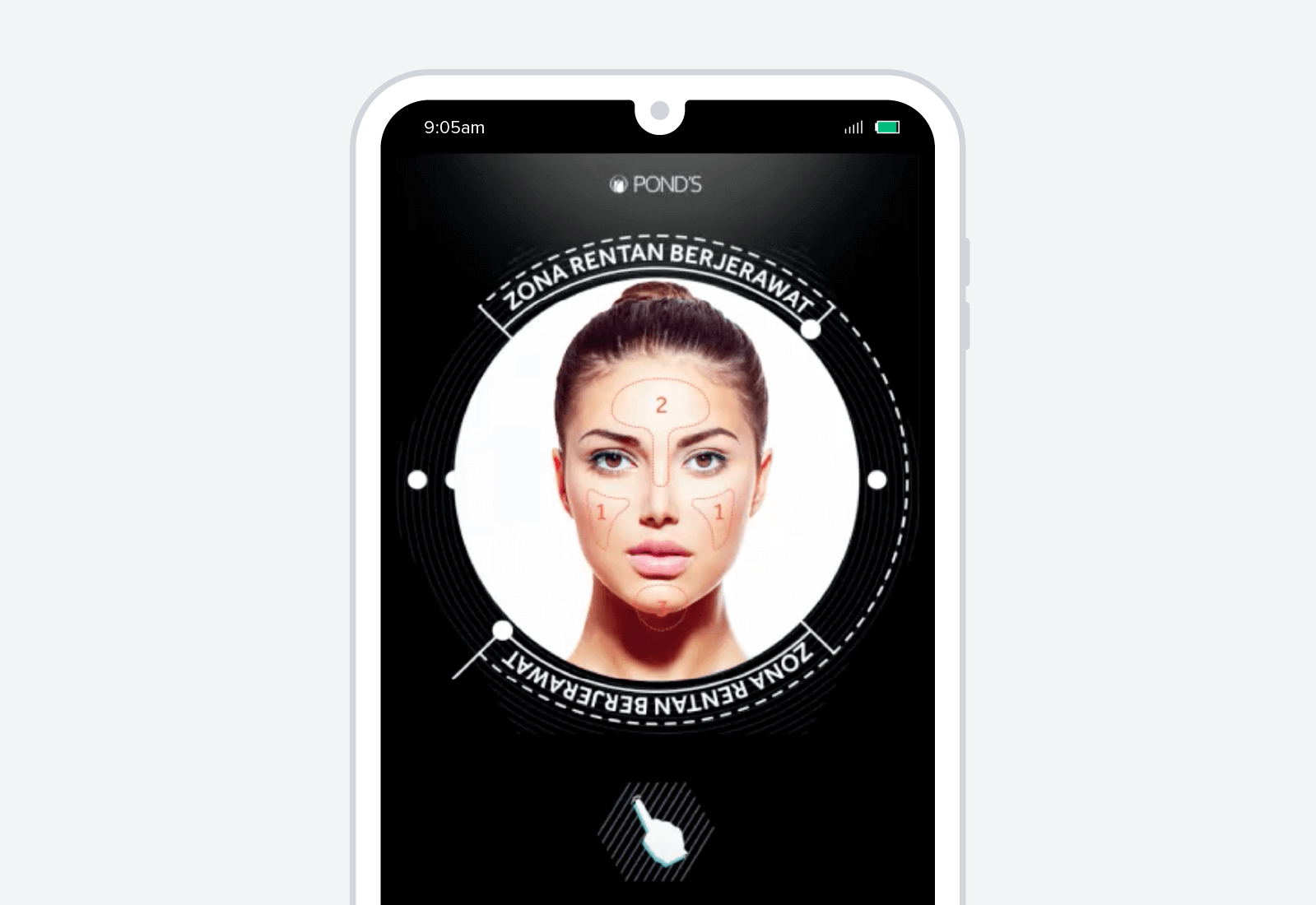
Pond’s is a popular beauty brand that wanted to promote its new line of acne face wash in Indonesia. The main issue was that this market was already saturated with brands and products, so Pond’s needed to create a unique and innovative ad campaign.
They accomplished this by creating the first augmented reality face detecting advertisement. The ad utilized the front-facing cameras on users’ phones to scan their face and determine which areas of their skin were prone to acne to promote their skin care product.
This campaign resulted in an average engagement of 39 seconds and had 39,000 people interact with their augmented reality technology.*
5. Duolingo
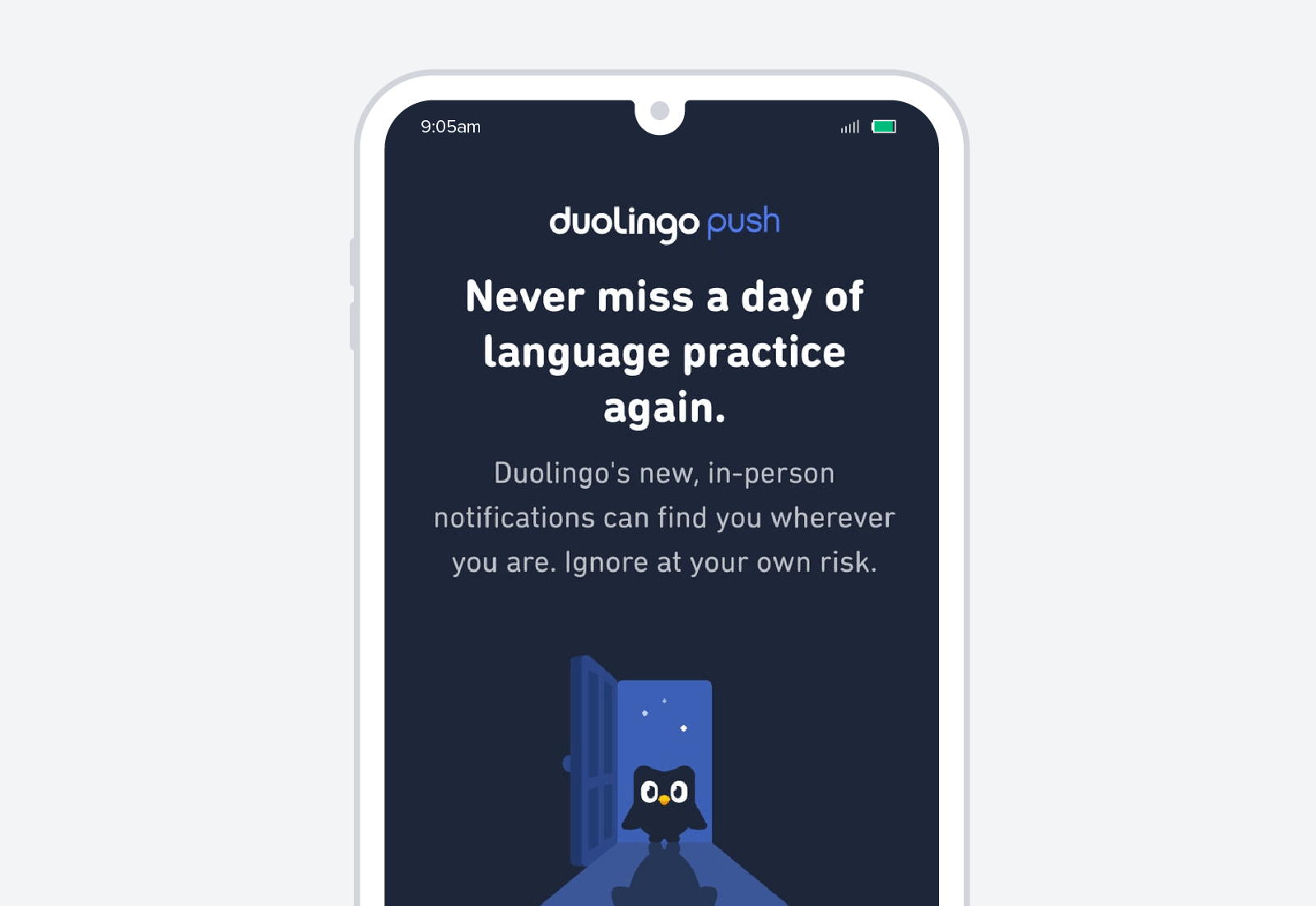
Every April Fool’s, the world’s most popular language-learning platform attempts to outdo themselves with some of the best internet pranks out there.
In 2019, Duolingo created a multichannel mobile campaign called Duolingo Push across YouTube, Twitter, Facebook, and Instagram.
Duolingo’s green owl mascot, Duo, sends users reminders to practice their language skills daily on their platform. Duo has inspired online memes and hilarious feedback surrounding the guilt users feel when they disappoint the little owl by missing a practice.
These online conversations inspired Duo to launch an “in-person” reminder program where Duo would show up at your door to remind you to do your language practice.
They created a dedicated landing page for the campaign, a short video showing Duo reminding users to do their lessons in person, and teaser social media posts.
This Duolingo Push campaign resulted in a viral success totaling 5.6 million video views across all channels and 7.7 million total impressions.*
6. Netflix
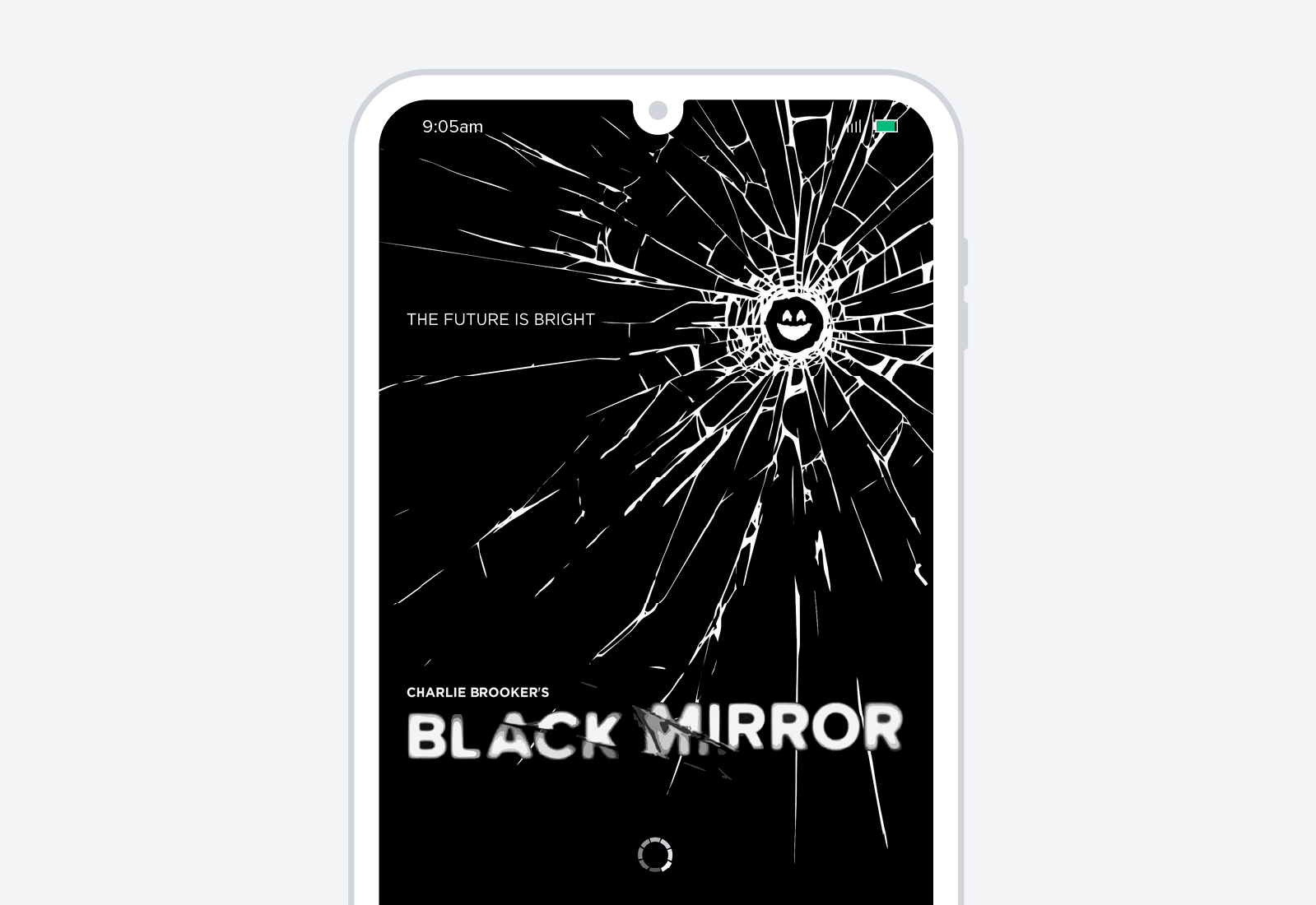
Netflix launched a mobile ad campaign to promote season three of their breakout show Black Mirror. The brand created a buzz online by making the mobile user’s phone appear to have a realistic cracked screen with a spooky message.
The advertisement made viewers feel like they were in an episode of Black Mirror and gained media attention for its originality. The mobile campaign “culminated in more than 1 million posts about the series, 30 times more conversation than season two.”*
7. Colgate
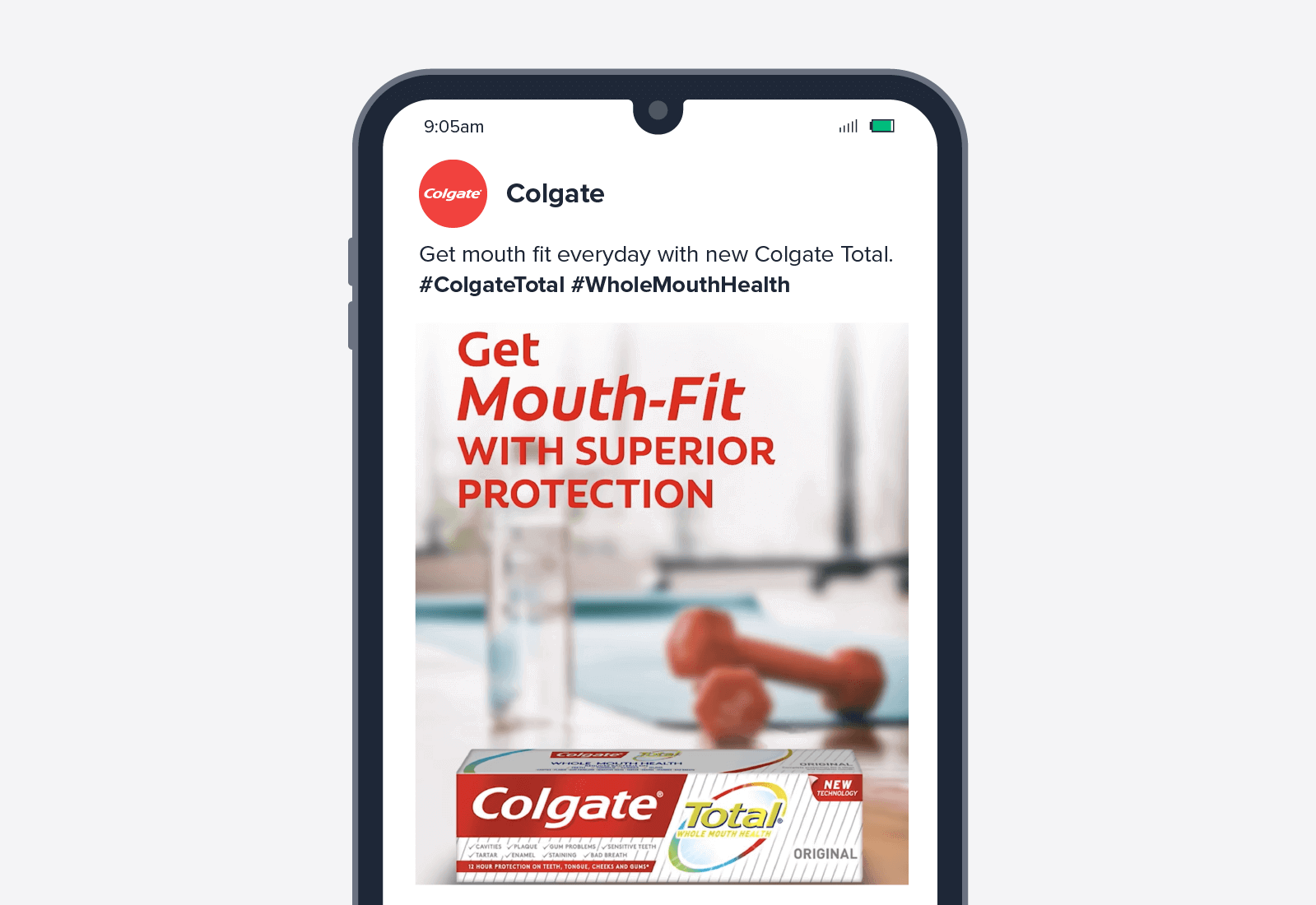
The oral care brand aimed to boost sales in the U.K. by running a mobile-first video campaign on Facebook and Instagram.
Colgate noticed the popularity of health and wellness content across social media platforms and wanted their campaign to tap into this trend. They used this high-interest category to promote the importance of a healthy mouth.
The brand launched videos that promoted the idea of “mouth fit” by using a split-screen to compare having healthy oral care to doing yoga, exercising, or engaging in other healthy activities.
The campaign resulted in a 12 million person reach and a 7.1% increase in sales for products featured in the mobile video advertisement.*
8. Samsung

When Samsung wanted to launch a campaign for their new Galaxy S6 phone, they partnered with InMobi to create real-time battery identification.
This feature was created to pop up on a user’s phone when their battery is low and give them a demo of the Galaxy S6. It would then demonstrate its fast charging capabilities by showing how long it would take to charge the individual’s phone battery.
The campaign highlights one of the phone’s more favorable features when the consumer needs battery life the most.
This interstitial advertisement resulted in 1.6% of their targeted audience clicking on the ad to find out more information and 1.1% of users clicking to see the battery identification feature.*
9. Ruffles
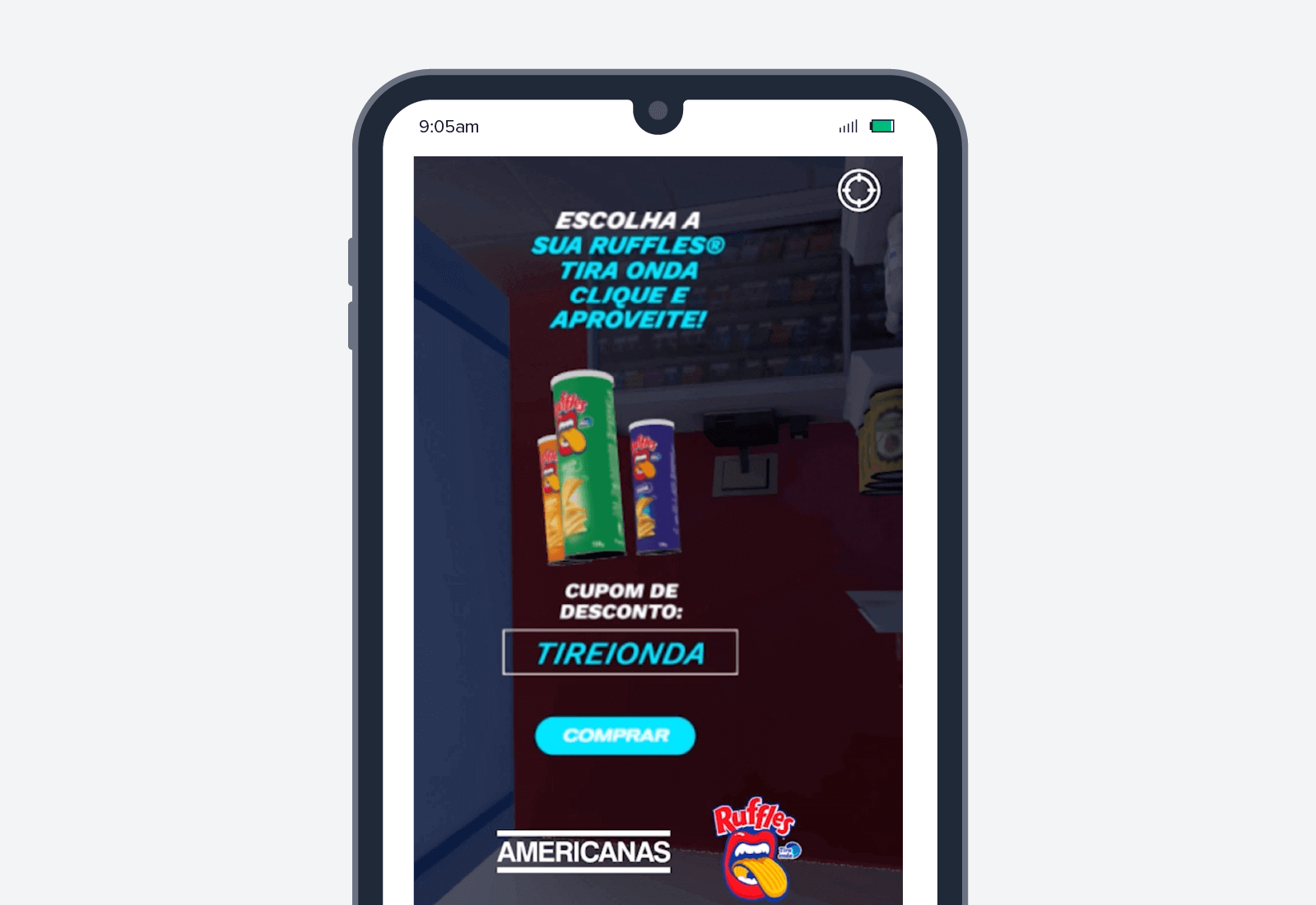
Ruffles, the famous chip brand, created a social media and augmented reality campaign that targeted teenagers after sales started to decline in Brazil.
The goal of their mobile campaign was “to reconnect with its teenager target, stop sales from falling further, and return to growth in the long-term.” To reach this demographic, Ruffles created a mobile game that incorporated augmented reality.
The user would turn on their front-facing camera, where they could only see themselves, but their friends would see ruffle chips surrounding them. Their friends could see their screens and send voice messages to direct them to grab the virtual chips. The more chips you grabbed, the more points you earned, and each week, Ruffles would feature the top scorers on their social media.
The campaign resulted in a 43% increase in sales, 26,000 app downloads, and Ruffles ranking in the top 15 most valuable brands in Brazil.*
10. British Airways
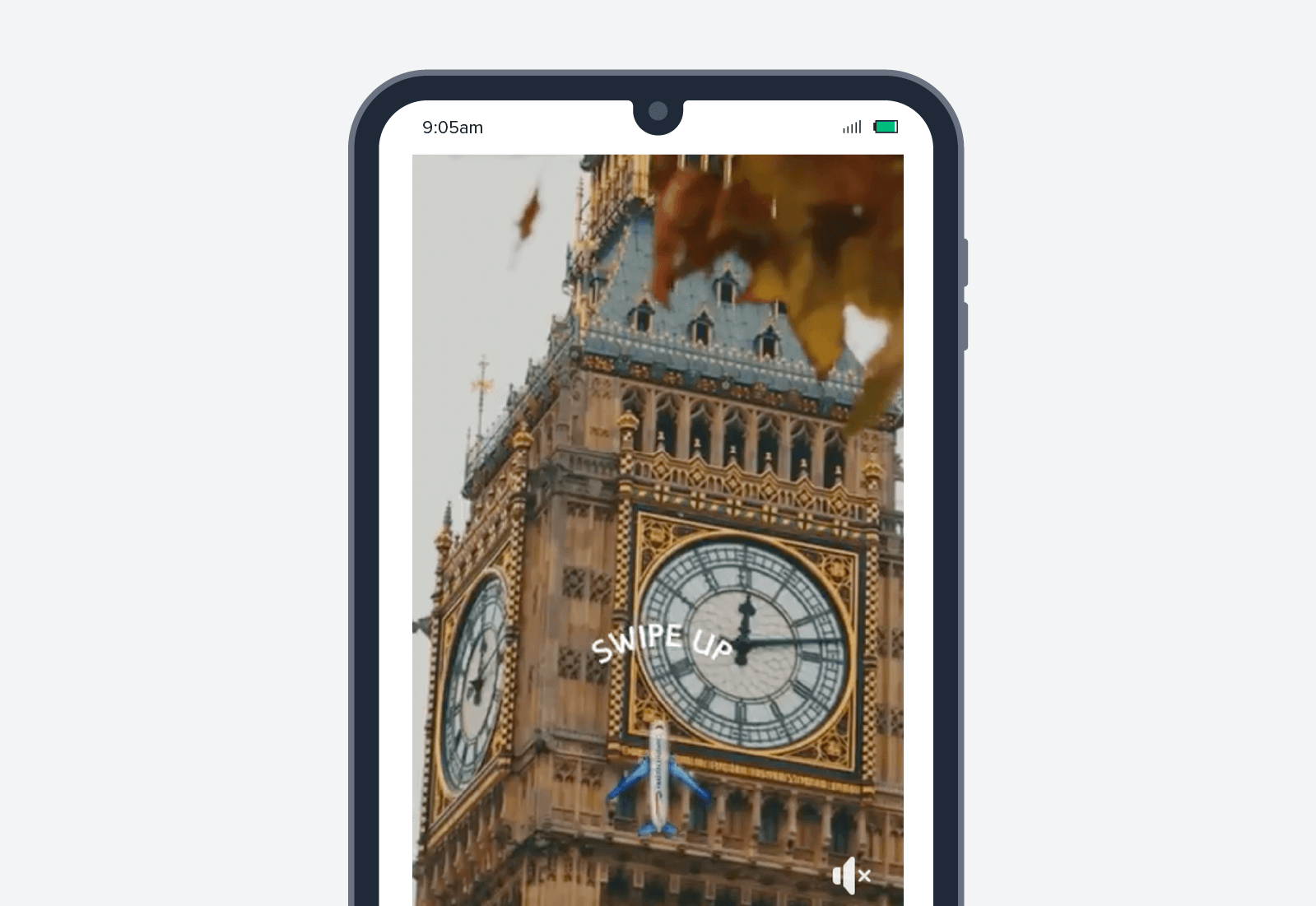
British Airways worked with Facebook Creative Shop to create an Instagram story advertisement that included innovative ways to keep users engaged. The mobile ad used video to give tours of popular activities and famous areas of London.
The campaign also included an interactive component where users could choose between two emojis to select if they wanted to see the activities during the busy nighttime or sunny daytime.
The goal of this British Airways campaign was to increase traffic to their website and increase overall sales.*
11. Gap

In 2018, Gap wanted to attract more millennials to their apparel by revealing their decades-long archive of their most popular logos.
The brand created a full screen carousel advertisement on Instagram stories of young people dancing in their new collection to connect with their target market.
The 19-day campaign resulted in a “73% higher click-through rate than in its past Instagram ad runs, along with an ad recall of 17 points.”*
12. HBO
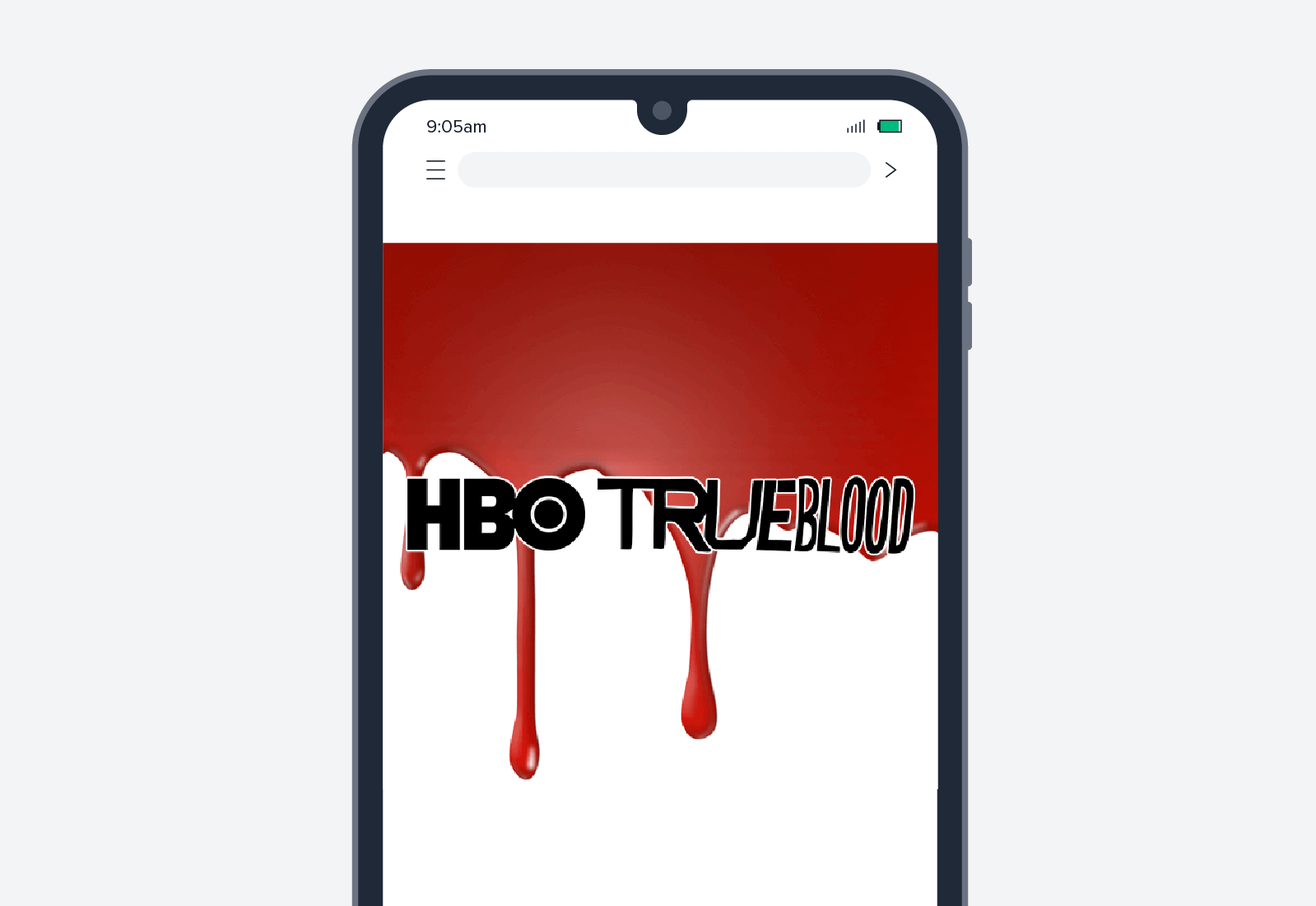
To promote season three of True Blood, HBO created the world’s first transparent overlay ad for mobile devices.
The advertisement would run while a user was browsing popular sites or mobile apps on their smartphone. A banner ad would appear at the bottom of the page promoting the upcoming season.
The first touch you make on your phone screen activates the advertisement and would leave a bloody fingerprint wherever you tapped.
After a few bloody fingerprints appeared, a large amount of blood would drip down the screen covering everything except the show’s logo and a play button to watch the trailer.
It gained over 27,000 tweets talking about the advertisement in one weekend and won several awards for its unique mobile experience.*
13. Chevy
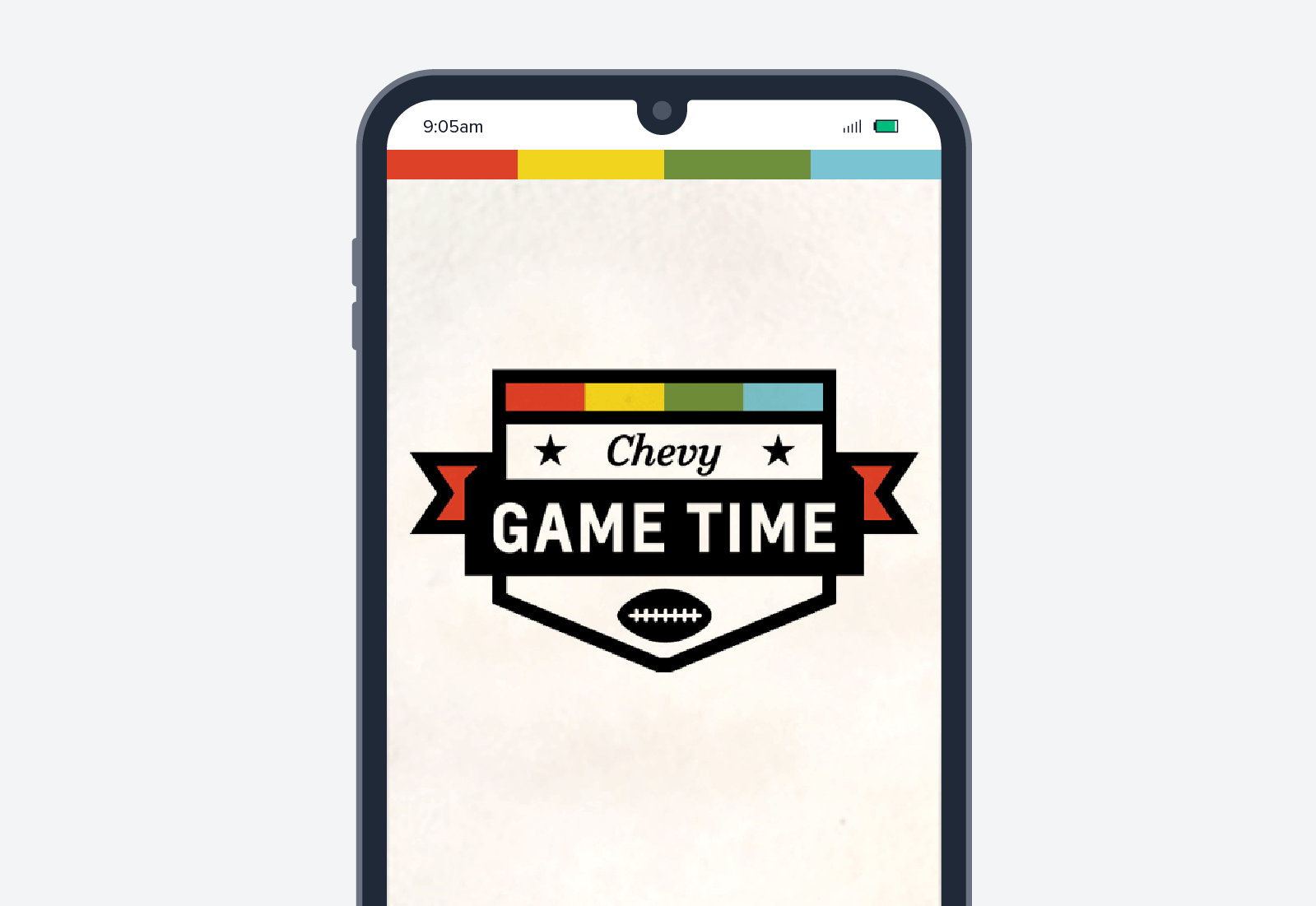
When you think of Super Bowl ads, you most likely think of television commercials, but in 2012 Chevy decided to bring their advertisement to your phone as well.
They created an app that encouraged viewers to engage with it throughout the entire game by rewarding attentive players with prizes and the possibility of winning a new car.
The app got people to watch their advertisements repeatedly, while distracting them from seeing competitors’ commercials.
The mobile ad resulted in people answering 21 million trivia questions and 700,000 individuals signed into the app.*
Mobile Advertisements Help You Reach a Larger Audience
As smartphone technology keeps progressing, mobile advertisements are going to become increasingly accessible. Brands will continue to target generations that grew up with smartphones and mobile advertising will continue to gain popularity for years to come.

See how today’s top brands use CleverTap to drive long-term growth and retention
Shivkumar M 
Head Product Launches, Adoption, & Evangelism.Expert in cross channel marketing strategies & platforms.
Free Customer Engagement Guides
Join our newsletter for actionable tips and proven strategies to grow your business and engage your customers.















































